Jérémy Nadal
Learning Energy-Efficient Hardware Configurations for Massive MIMO Beamforming
Aug 11, 2023Abstract:Hybrid beamforming (HBF) and antenna selection are promising techniques for improving the energy efficiency~(EE) of massive multiple-input multiple-output~(mMIMO) systems. However, the transmitter architecture may contain several parameters that need to be optimized, such as the power allocated to the antennas and the connections between the antennas and the radio frequency chains. Therefore, finding the optimal transmitter architecture requires solving a non-convex mixed integer problem in a large search space. In this paper, we consider the problem of maximizing the EE of fully digital precoder~(FDP) and hybrid beamforming~(HBF) transmitters. First, we propose an energy model for different beamforming structures. Then, based on the proposed energy model, we develop an unsupervised deep learning method to maximize the EE by designing the transmitter configuration for FDP and HBF. The proposed deep neural networks can provide different trade-offs between spectral efficiency and energy consumption while adapting to different numbers of active users. Finally, to ensure that the proposed method can be implemented in practice, we investigate the ability of the model to be trained exclusively using imperfect channel state information~(CSI), both for the input to the deep learning model and for the calculation of the loss function. Simulation results show that the proposed solutions can outperform conventional methods in terms of EE while being trained with imperfect CSI. Furthermore, we show that the proposed solutions are less complex and more robust to noise than conventional methods.
Flexible Unsupervised Learning for Massive MIMO Subarray Hybrid Beamforming
Aug 10, 2022

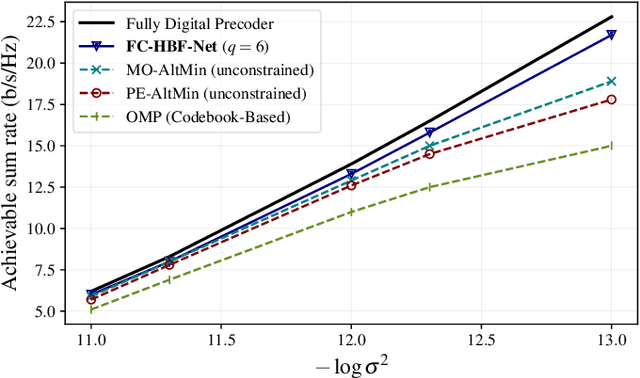
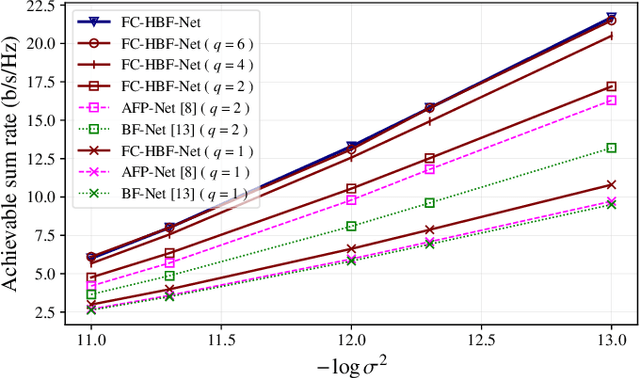
Abstract:Hybrid beamforming is a promising technology to improve the energy efficiency of massive MIMO systems. In particular, subarray hybrid beamforming can further decrease power consumption by reducing the number of phase-shifters. However, designing the hybrid beamforming vectors is a complex task due to the discrete nature of the subarray connections and the phase-shift amounts. Finding the optimal connections between RF chains and antennas requires solving a non-convex problem in a large search space. In addition, conventional solutions assume that perfect CSI is available, which is not the case in practical systems. Therefore, we propose a novel unsupervised learning approach to design the hybrid beamforming for any subarray structure while supporting quantized phase-shifters and noisy CSI. One major feature of the proposed architecture is that no beamforming codebook is required, and the neural network is trained to take into account the phase-shifter quantization. Simulation results show that the proposed deep learning solutions can achieve higher sum-rates than existing methods.
RSSI-Based Hybrid Beamforming Design with Deep Learning
Mar 12, 2020
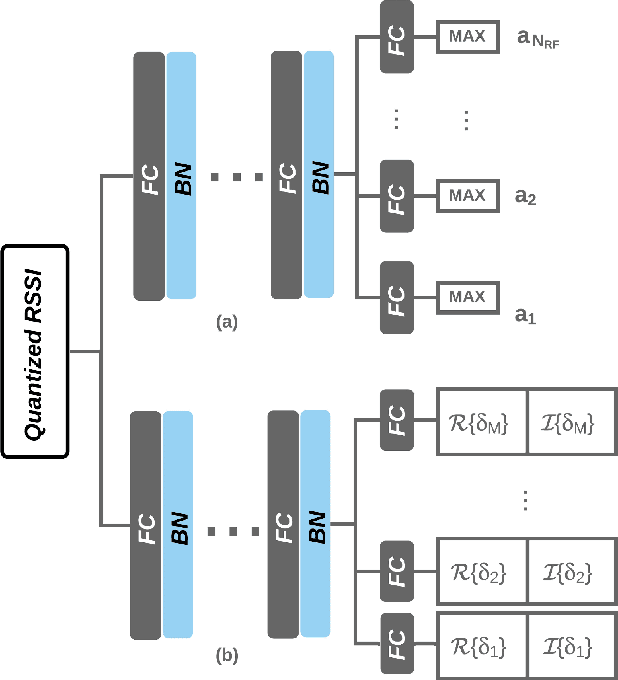
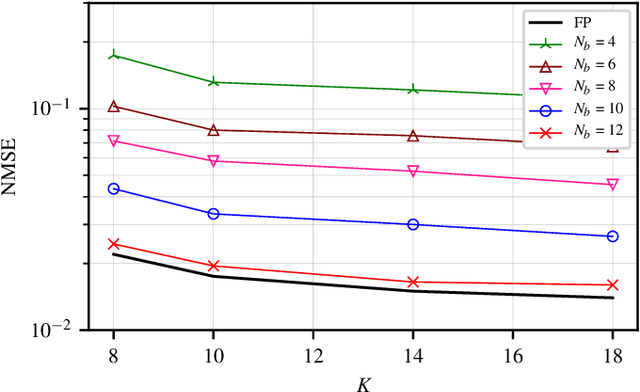
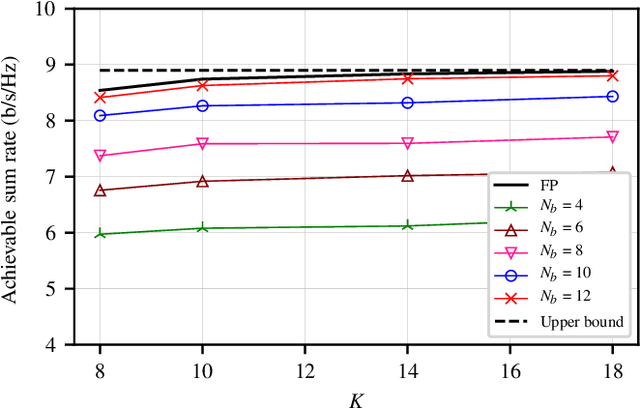
Abstract:Hybrid beamforming is a promising technology for 5G millimetre-wave communications. However, its implementation is challenging in practical multiple-input multiple-output (MIMO) systems because non-convex optimization problems have to be solved, introducing additional latency and energy consumption. In addition, the channel-state information (CSI) must be either estimated from pilot signals or fed back through dedicated channels, introducing a large signaling overhead. In this paper, a hybrid precoder is designed based only on received signal strength indicator (RSSI) feedback from each user. A deep learning method is proposed to perform the associated optimization with reasonable complexity. Results demonstrate that the obtained sum-rates are very close to the ones obtained with full-CSI optimal but complex solutions. Finally, the proposed solution allows to greatly increase the spectral efficiency of the system when compared to existing techniques, as minimal CSI feedback is required.
 Add to Chrome
Add to Chrome Add to Firefox
Add to Firefox Add to Edge
Add to Edge